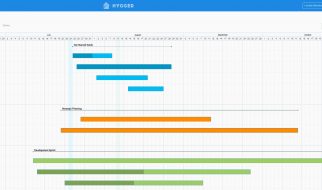If you met me only two years ago, there is no way you could have guessed that today I?d be able to make a living from nine different sources, across varied fields such as software and game development, photography, writing, self-help guidance, eCommerce, etc.
Back then, all I did was build software for a living. Not that there?s anything wrong with that but I personally wanted more. I wanted to learn more things faster, yet I had no idea how.
Do you feel like that too?
Since then, I?ve learned more than 40 new valuable skills; many of them I can use to make money, meet new people, and build stronger relationships.
Through all this skill learning experience, combined with the various readings and courses I?ve completed on the subject, I can now safely say that there is one timeless way to learn any new skills faster:
The more smartly-practiced skills you learn, the faster you?ll learn other connected skills.
Let?s break it down to more understandable chunks:
Smartly-practiced
When?s the last time you spent some time thinking about your learning experience for a given skill?
I?m not exaggerating when I say the majority of people stopped at age 12 or below. Studies show that kids lose the vast majority of their curiosity by the age of 12.
The short explanation is that when you start school, you don?t have to think creatively anymore on how to solve problems. You are told what to think, what home-works to do, what tests to take, etc.
Even for people who do continuous education, most of them just blindly follow a curriculum laid out by a ?teacher? who ?knows? how to ?best? learn a subject.
Remember how you learned to ride a bicycle as a kid?
Right! You watched and tried on your own. You failed. Many times. You tried again the next day. And guess what? A few days later, your brain started making the right connections for you.
 Photo by Chelsea Aaron on Unsplash
Photo by Chelsea Aaron on Unsplash
What?s so smart about that?
You practiced the way that worked best for you. You didn?t follow a YouTube tutorial you found on ?the best way to learn how to ride a bicycle?. You didn?t practice this one method you found online over and over again until it worked (or ultimately didn?t).
The best way to learn any skill is never the best way for everyone.
Connected skills
This is probably the most important concept to understand. Skills are physical connections in your brain. We can call a group of connections a ?chunk?. A skill is a combination of multiple chunks in your brain.
To make things clearer, let?s use a simple example. Let?s deconstruct the skill of throwing a basketball by identifying some of the chunks necessary to perform a good throw:
- Jumping
- Flexing legs
- Raising arms
- Arm pushing motion
- Calculating distance
- Calculating force
- and many more!
Each from the list above is one or multiple chunks of connections in your brain.
Now, let?s say you have become pretty good at throwing a basketball. What?s another skill you think might be easier now to learn?
Right, a skill that uses the same chunks!
Now that you know how to flex your legs and jump, it?s much easier to perform a long jump. In fact, without these chunks, there?s no way you could do that!
See what I mean with connected skills?
Some skills can?t be learned until you have a learned a ?subset? of that skill.
The SkillUp Tree Principle
Just as you can?t ride a bicycle before you know how to walk, you can?t simply learn any skill in any order.
That?s why when you try to learn the ?best? way, it won?t necessarily work for you because the ?author? of the said ?best? way will likely have very different chunks formed in their brains than yours.
Given this (repeated) fact:
The more smartly-practiced skills you learn, the faster you?ll learn other connected skills.
How can you be smart about your learning and how do you find the right connected skills to learn any new skill faster?
The answer lies in the header above.
Most people are not aware of all the skills they?ve learned (chunks in their brains) and how they relate to each other. Truthfully, I?m not fully aware either but I?m working on that.
Here?s a simple branch of a ?simple? skill:
- Walking: Sit still -> Crawl -> Stand on two feet -> Move legs while standing -> Body balance
From the Walking branch, we can branch further to the following branches:
- Running: Walking -> Leg and arm coordination -> Leg pushing (strength) -> More advanced body balance
- Jumping: Walking -> Flexing legs -> Leg pushing -> More advanced body balance
- Riding a bicycle: Walking -> Sitting on bicycle -> Leg rotation movement -> Hand guidance -> Hand and feet coordination -> Motion momentum -> etc.
These are obviously very basic examples but I?m hoping they illustrate the idea clearly.
Origins of the Theory
Gamers are familiar with the concept of a Skill Tree. It is common in many types of games, especially role-playing games (RPG). Here?s an example from the famous Diablo 2 game:
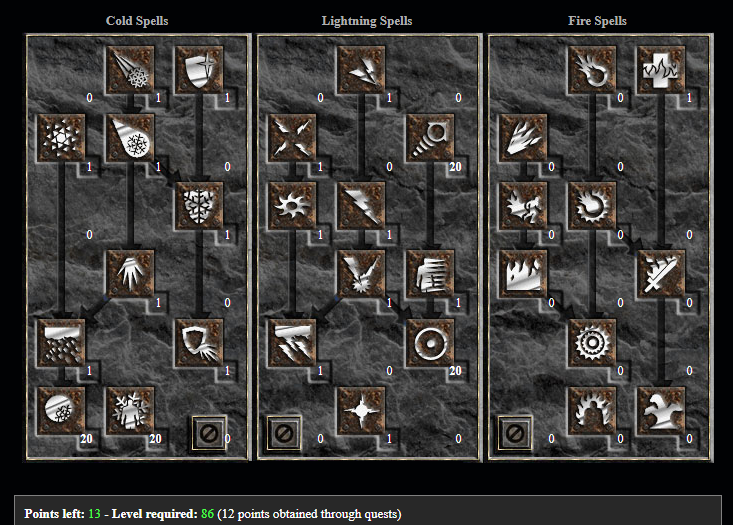 Skill Tree from the Sorcerer in Diablo 2
Skill Tree from the Sorcerer in Diablo 2
The Sorcerer in Diablo 2 has three areas of ?mastery?: cold, lightning and fire. Let?s call each of them a Skill Tree.
If we look at the Cold spells tree, we can see that it starts with 3 branches identified by the following icons:
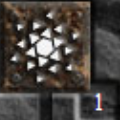
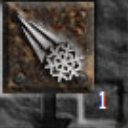
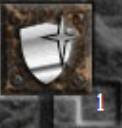
If we follow the arrows, we can see what skill needs to be learned before being able to learn the next one. Like this one:
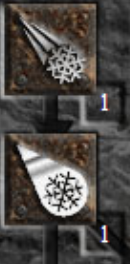
The skill at the bottom cannot be learned until you have some mastery of the skill above. Like our Walking example from above, you can?t learn to walk until you know how to stand reasonably well.
Another interesting aspect of the Diablo 2 Skill Tree is the number next to the icon. The above examples only showed ?1?, but if you look at the bottom of the Cold spells tree, you can see this:
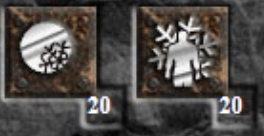
That number signifies mastery of a given skill. In this case, 20 is the maximum.
If we look back at the running and jumping skills from above, you?ll notice how I noted ?More advanced? body balance. In order to run or jump, you need to be better at balancing your body weight than if you only know how to walk.
And last but not least, sometimes to learn a new skill, you need to know sub-skills of different branches, as best illustrated here:
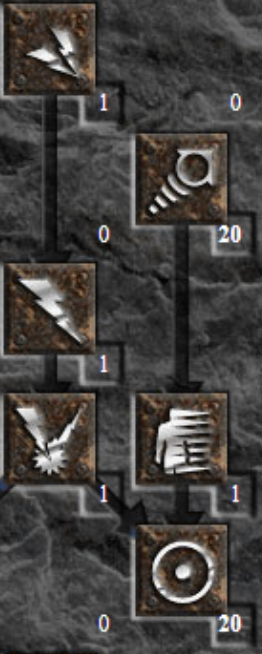
Let?s zoom in on this one:

See the arrows pointing to it? They come from completely different branches.
A real-life example could be the Long Jump idea from above. You can?t do a long jump until you know how to run (a branch) and how to jump (another branch).
The following sections will explain why the theory is important and how to bring it into practice.
Why Making Your Own SkillUp Tree Is Important
The short answer is this:
Knowing your skill mastery and the direction they?re going gives you the clarity on what to learn next for maximum learning efficiency.
Some of you may be familiar with my SkillUp approach. Basically, I learn 3 new skills a month, practicing every day for 30 minutes each.
Every month, I go back to the drawing board and try to figure out what skills I should learn next. It?s not as easy as it sounds. Sometimes I choose simply for pleasure, sometimes for work, sometimes to advance a certain branch of a tree.
The first month I started, I learned these 3 skills:
- Line art and colouring using Photoshop;
- Spanish speaking for the workplace (doing a SCRUM stand-up meeting in Spanish); and
- Document classification using Machine Learning.
These are very personal and are specific branches of a larger branch or tree. Any of these skills might be either easy or hard for you depending on your level of mastery in ?prerequisite? skills.
While I had no art knowledge, I?m at max level in ?Mouse Handling? and at level 2 (out of 4) in Photoshop. Learning to draw using my previous skills was achievable in 15 hours of deliberate practice.
At the end of the month, I went from level 0 in the skill to level 1+.
If you decide to pick up the same skill but have never used Photoshop before, you?ll have to work extra hard to learn the skill and it will likely take you a lot more time than I to learn it.
Equally, if you?ve never done any programming before, good luck learning how to ?classify documents using Machine Learning? faster than me!
So why is making your own SkillUp Tree important?
A SkillUp Tree gives you a clear sense of direction and makes it easier for you to judge the level of complexity required to learn a specific new skill.
How to Make Your Own Pen&Paper SkillUp Trees
* You should be able to replicate using software like Microsoft Visio or Draw.io.
Let?s start with this simple sketch I did for the very broad skill of ?Drawing?. Obviously, it?s far from complete:
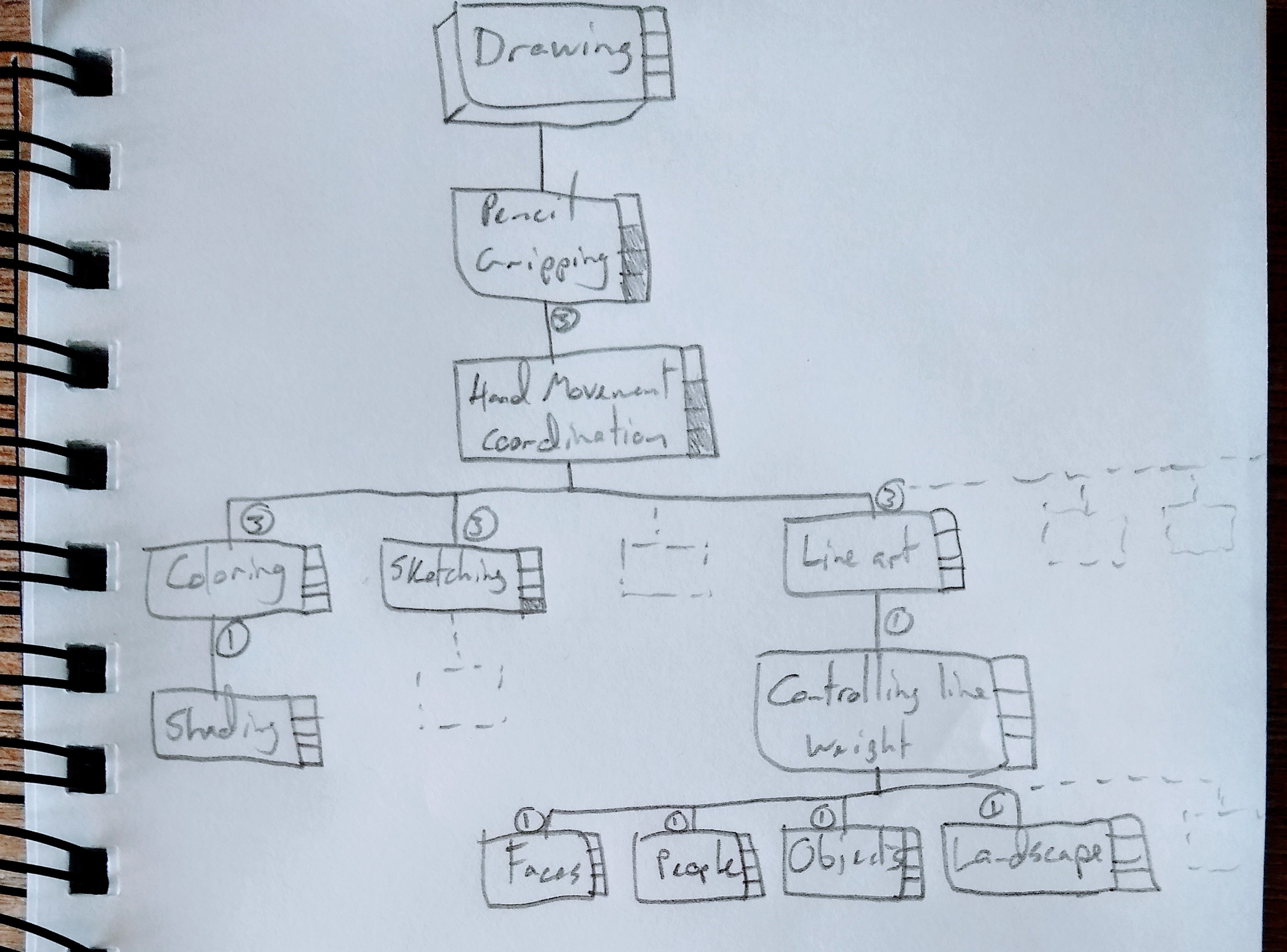 (Incomplete) SkillUp Tree for the Drawing skill
(Incomplete) SkillUp Tree for the Drawing skill
In it, you can see a few elements:
- Rectangles: The name of the skill.
- Scale: The level of competency in the skill (more on that below).
- Lines: Link between two skills.
- Number on line: The level of competency required in the previous skill to learn the connected skill.
The scale works this way:

- 0 bar: Not learned
- 1 bar: Beginner
- 2 bars: Intermediate
- 3 bars: Advanced
- 4 bars: Expert
In the above example, I went for a skill that was very broad. I actually don?t recommend building your SkillUp Trees from such a high level, but rather more for a sub-skill you actually want to learn in a short amount of time (~15 hours).
A good example is the Portrait Photography skill I learned back in January. Here?s a sketch for it:
 Semi-complete SkillUp Tree of sub-skills I needed to learn to become good in Portrait Photography
Semi-complete SkillUp Tree of sub-skills I needed to learn to become good in Portrait Photography
What makes for a good portrait photographer?
It was a question I had before learning the skill. The answer: it?s a combination of all of the above.
A good portrait photographer actually needs strong personality skills to perform. Building the SkillUp Tree forces you to think outside-the-box and truly analyze what it is that encompasses a skill.
Building the SkillUp Tree
When you build your SkillUp Tree, please be aware of the following tips:
- Do search on the internet how people are learning the skill to inspire you;
- Ask people around you how they learned the skill;
- Go as deep as you can think of;
- Start with a simple bullet list (much easier to re-arrange than re-drawing!);
- Give yourself plenty of space on your page;
- Draw with a pencil so you can easily erase as needed;
- You will likely have to re-draw it at least twice, so it?s okay to treat your first sketch as a draft; and
- Your lines don?t need to be perfect on the first draft!
Once you?ve built your SkillUp Tree, test it out! Learn the sub-skills you put in there and see if it brings you closer to being better at the ?main? skill. If not, simply readjust the tree with new assumptions.
Remember, learning is an iterative experience.
The Future: Building a Collective Intelligence
I have two goals with the SkillUp Tree principles:
- Make everyone more aware of their current and future skills; and
- Hope that people will share their SkillUp Trees so we can figure out, at a more granular level, how anyone can learn any skill faster, based on collective intelligence.
While the pen&paper version is nice, I feel like we need a tool to make it easier to build, navigate, and make sense of all the information. In addition, such a tool should collect anonymous data to guide other people in figuring out what skills they should learn next, and how.
The assembled data would form a collective intelligence and make everyone more skillful.
Conclusion
The more smartly-practiced skills you learn, the faster you?ll learn other connected skills. And knowing your skill mastery and the direction they?re going gives you the clarity on what to learn next for maximum learning efficiency.
That?s what building your own SkillUp Trees is about. It gives you a clear sense of direction and makes it easier for you to judge the level of complexity required to learn a specific new skill.
I hope that, with the information and tools provided in this article, you?ll be equipped to learn any new skills faster.
But as with anything, you need to put this into practice. No one knows you more than yourself. So go on ahead and make a list of your current skills and a mastery level next to it. Use any scale of your choice. Turn it into a Skill Tree, or build Skill Trees going forward with new skills.
You?ll find that once you have done a few, you?ll have a level of awareness way beyond your peers and will learn that much faster through smarter learning.
You can do this!
Thanks for reading, sharing, and following! 🙂
Check out my deeply actionable Course on 10 Skills to Improve Your Learning in 10 days.
![]()


